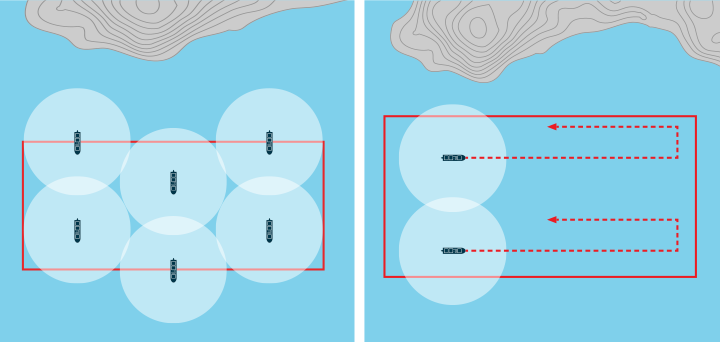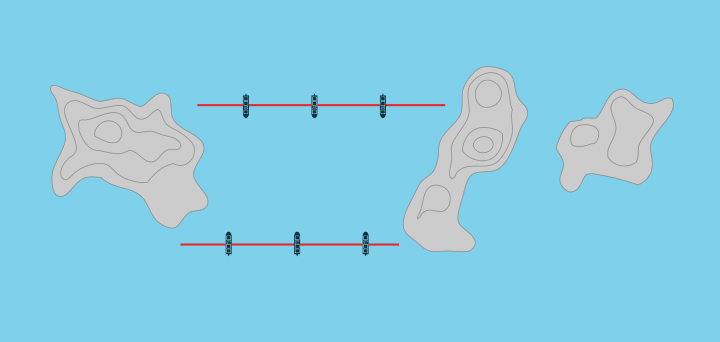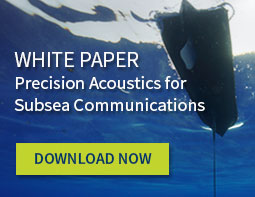Enhance Maritime Surveillance by Shining a Light on Dark Targets
Liquid Robotics — January 10, 2018
Even in a world of increasing satellite coverage, enabling 24/7 maritime monitoring can be difficult and costly with traditional methods such as ships, satellites, and land-based radar systems. Government and military agencies, seaport authorities, and companies that operate in the ocean need ways to scale monitoring capabilities more quickly. Unmanned surface vehicles are emerging as a platform that can enable new capabilities more rapidly.
In late 2017, while attending two different industry events — IQPC Maritime Reconnaissance and Surveillance in Rome, Italy and MADEX 2017 in Busan, S. Korea, Liquid Robotics spoke about the capabilities of unmanned surface vehicles for maritime surveillance and how they can be used to identify both traffic patterns and dark targets (vessels not broadcasting an automated identification signal). And while this data is useful, ultimately, government and law enforcement agencies want actionable data that can help them decide when to cue / deploy assets for interdiction. How do I know that what I heard is a vessel of interest, or more importantly one which should be prioritized for interdiction?
Liquid Robotics has demonstrated how acoustics, specifically passive acoustic sensors can be used to detect dark targets. Multiple Wave Gliders are used to form virtual walls or trip wire formations. When a vessel crosses these lines, the alerts and acoustic data can yield actionable intelligence and allow organizations to cue other assets including UAS, manned aircraft, patrol vessels and satellite imaging for inspection, tracking or interdiction. One key to delivering actionable intelligence is enabling shoreside operators or analysts, located anywhere in the world, to extract acoustic sound snippets for further inspection.
Long duration USVs like the Wave Glider offer persistence and flexible sensor configurations that can be leveraged in concert with traditional manned assets to deliver a significant increase in operational efficiency and effectiveness. With relatively low capital and operational costs (compared to traditional surveillance and observational platforms), Wave Gliders can be a valuable complement to other ocean observation platforms such as aircraft, vessels and buoys.
In addition to lower capital costs, Wave Gliders can be deployed quickly into an operational area and operate for much longer periods (months). Organizations also see benefits from the advances in autonomy and software from Wave Gliders because it enables a small team of to support a significant number of distributed assets. Basic decisions about target identification, vehicle course, and system health monitoring can be made with minimal human input.
Here are some examples of how unmanned surface vehicles, and specifically Wave Gliders equipped for maritime surveillance, could be deployed in different formations to meet surveillance needs. An area coverage mode, depicted below, would offer the highest level of detection probability and the potential to track vessels. Yet, if little is known about illegal or dark target activity across a large area, and fewer vehicles are available, a patrol formation might be more appropriate (see figure below).

Figure 1. Area coverage (left) and patrol formation (right) — these offer different probabilities of detection
In areas with known activity, a trip wire formation might be used to create a floating fence or even multiple floating fences in key hot spots to maximize intelligence gathering and possible interdiction.

Figure 2. Trip wire configuration in two locations
Affordable persistent monitoring enables significant data collection for analysis, leading to improved understanding of both legal and illegal activity trends in an area of interest. Persistent, unmanned systems such as a network of Wave Gliders, can be integrated into broader operational systems to improve situational awareness and the use of high value assets such as unmanned aerial vehicles (UAVs) and ultimately, patrol vessels. More importantly, a Wave Glider based monitoring network can be deployed rapidly to meet evolving operational needs.
Learn more about these concepts as discussed in the talks we gave at both conferences, in a recent whitepaper we published, “Shine A Light on Dark Targets and Cue Assets for Inspection and Interdiction.”
